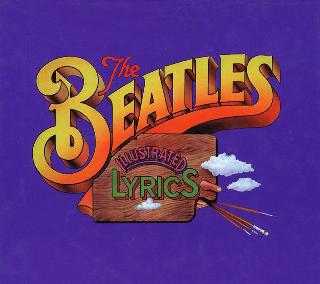Index
Home
Vorige
Piggies
Composer(s) : Harrison
Year : 1968
Chords/Tabs: Piggies
Notes on "Piggies" (P)
KEY A Major
METER 4/4
FORM Intro -> Verse -> Intro -> Verse ->
Intro' -> Bridge -> Verse (instrumental) ->
Intro -> Verse -> Outro (w/complete ending)
GENERAL POINTS OF INTEREST
Style and Form
- This is quite a surprising blend of pseudo-classical mannerisms
in the music with sophomoric cynicism in the lyrics!
- Classical connotations jump at you right off the surface of this
song, starting with the harpsichord and cello on the backing track,
and the almost painfully galumphing, square backbeat; but it runs
deeper than that, as we'll see. Makes one wonder if this is sheer
happenstance or else perhaps there is biographic evidence showing this
was done aforethought.
- For example, he says, the deployment of a brief instrumental intro before
EVERY verse is a technique you'll find occasionally in so-called 19th
century art songs; e.g. page through any book of Schubert lieder and
you'll undoubtedly run into some examples. Please label this "classical
exhibit #2. Its usage here makes for a bulky form which, in turn, makes
the song feel "longer" than it actually is; only 2:04, including the
trailing pig snorts!
Melody and Harmony
- Classical exhibit #3: the heavy use of melodic chord outlines
(arpeggio fragments) in both the opening hook as well as the
tune which follows.
- The harmony, throughout, is rooted strongly to the home key in
spite of a couple attempts to steal away from it.
Arrangement
- The backing track features a nouvelle cuisine melange of harpsichord,
acoustic guitar, electric bass, bowed cellos, and tambourine. The
carefully coreogrpahed comings and goings of these several elements
repays careful study.
- The lead vocal is treated to several special effects common to the
period in which it was recorded. The operatic male chorus appearing in
the final verse is classical exhibit #4.
SECTION-BY-SECTION WALKTHROUGH
Intro
- The intro is four measures long and neatly defines the home key
and exposes the tune's hook twice over:
|A |E |A |E |
A: I V I V
Verse
- The verse is 12 measures long with three equal phrases that form
a pattern of AA'B, though you might say that even the 'B' phrase is
derived from the second half of A':
|A |E |A |E |
I V I V
|A |E |f# |B |
I V ii V-of-V
|f# |B |E |- |
ii V-of-V V
- The harmony of this section is not your typical 12-bar blues form.
The continued harping on just the I and V chords, starting in the
intro and continuing through the first half of this section, makes
the appearance of new chords in the second phrase quite welcome.
- The repeat of chord progression of f#->B creates a rhetorical effect
from the way it appears each time at the opposite end of a phrase.
- The harmonic rhythm slows up in the final two measures, filled out
as they are by a popular cliche in which the two inner voices rise
in parallel 10ths; don't give all four "chords" individual Roman
numerals -- the two measures are no more than a "prolongation" of
the V chord.
Intro
- The intro repeat leading into the bridge features a surprise twist
on the original intro that is a textbook-like illustration of (ahem)
the "malleability of motivic material." Call it classical exhibit #5.
|A |E |A |C# |
I V I V-of-vi
Bridge
- That melodic twist at the end of the previous section would seem
to hint at a potential modulation, but by the end of the first four
measures of this bridge, you find that you're still quite within the
bounds of the home key you started out in:
|b |C# |D |A |
ii V-of-vi IV I
|E |- |- |- |
V
|b |C# |D |E |
ii V-of-vi IV V
|- |- |
- The bridge is an unusual 14 measures long, built out of two
unequal phrases (8 + 6).
- Look fast or you'll miss the short-lived bluesy touch provided by
the G natural at the end of that nice bassline riff in measure 8.
Outro
- The remainder of the song further sustains the classical tone.
- Exhibit #6: the style of figuration used in the instrumental verse;
harpsichord right hand parts in which the melody played by the last
3 fingers alternates with a repeated note played by the thumb, and
cello parts dominated by scales.
- Exhibit #7: the retreat to the parallel minor key for the outro; an
especially popular gambit in theme and variation pieces.
- ... followed by, in a disorienting context switch ("one more time"),
exhibit #8: a progression of two broadly executed chords that is
ambiguous with respect to key. Ask yourself, does the song end with
I -> V of the original A Major home key, or are we to grock it as a
Plagal, IV -> I ending in the key of E?
SOME FINAL THOUGHTS
- Fastidious arrangement and pork chop/bacon wording changes aside,
this particular song seems to change little between Esher demo and the
studio take, at least compared to the kind of revisions we've seen made
by John and Paul in their respective songs.
- I wonder if this reflects some nervous reluctance on George's part
to share anything less than finished with his songwriting mates, feeling
vulnerable in front of them even within the confines of an otherwise
relaxed retreat. Honestly, I myself don't have sufficient command of
the biographic material to draw a definitive conclusion in this area,
but I do find the evidence thought provoking.
Regards,
Alan (awp@world.std.com)
---
"Get him out of here. He's knocking the programme's image!" 010198#140
---
Copyright (c) 1995 by Alan W. Pollack
All Rights Reserved
This article may be reproduced, retransmitted, redistributed and
otherwise propagated at will, provided that this notice remains
intact and in place.
Ook op The Beatles [White Album]:
(c) 2024 Serge Girard


 (c) Alan Aldrigde, The Beatles Illustrated Lyrics
(c) Alan Aldrigde, The Beatles Illustrated Lyrics